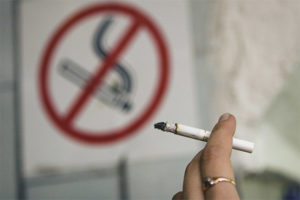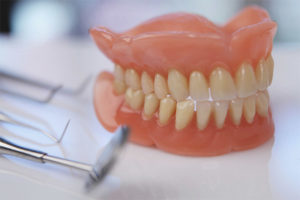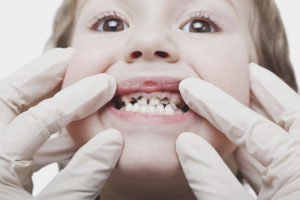The content of the article
At the age of six months (on average), the child begins to grow teeth. By two or three years, a full set of milk teeth in the amount of 20 pieces is growing. After five years, milk teeth begin to change to molars. Before falling out, the milk tooth loosens and loses its strong roots. That is why pulling out a milk tooth is not difficult.
Of course, you can visit a pediatric dentist to remove a baby tooth. However, as you remember, there are 20 of them; will you not visit a doctor 20 times? In addition, for sure, the baby is afraid of people in white coats. In order not to injure the psyche of the child, not to waste time and money, you can tear out a milk tooth at home yourself.
How to prepare a child for tooth extraction
Without pain, you can remove the tooth that is very loose. Therefore, do not rush to remove the milk tooth, if it is still tight enough in the hole. The child himself, involuntarily, will fiddle with a loose tooth with his tongue. In a few days, when the tooth will easily walk from side to side, the tooth can be pulled out.
Do not forget to talk with the child and mentally prepare him for the upcoming procedure. Tell the kid that the old tooth has already served, he will leave soon, and in his place a big, new and strong tooth will grow. Tell your child the story of the Tooth Fairy, who exchanges teeth for sweets and new toys. The more enthusiastic the story, the more interest you can arouse in the child. This means that he will not experience fear.
Before the procedure, the child needs to be fed, because after removing the tooth it will not be possible to eat for several more hours.
How to tear out a baby tooth at home
- After the child has eaten, he must carefully brush his teeth. This is done so that microbes and bacteria with pieces of food do not get into the open wound.
- If the baby is afraid of pain, Ibuprofen can be given 20 minutes before the procedure. You can also anoint the gums with anesthetic ointment. The simplest solution is to apply Calgel, which is used in teething, to the gums. It seems to freeze nerve endings and suppress pain.
- A tooth may fall out when a child eats or gnaws solid food. Give the baby an apple to bite right on the skin, carrots or cucumber. Perhaps the tooth will fall out on its own.
- The easiest and most correct way to remove a baby tooth is manual. First you need to wash your hands and take a piece of bandage or cotton wool. Cover the tooth with a cotton swab and grip it tightly with your fingers. Pull out the tooth with a sharp movement. The jerk should be around the axis and a little on yourself. This will help you quickly and painlessly get rid of a bored tooth.
- A loose tooth is not difficult to remove, it can be done with a thread. Measure out half a meter of strong nylon thread. Fold it in half and throw in a simple tightening knot. Hook the tooth and tighten the thread.
- To tear a tooth you need a quick, firm and confident movement. If the milk tooth is located on the upper jaw, it is necessary to tear down. If at the bottom - respectively, up. Pulling to the side is extremely undesirable, this contributes to the formation of a wider wound.
- If you doubt your confidence, you can attach the tooth to the doorknob and slam the door abruptly. The child should open his mouth wide and tilt his head slightly. If the tooth breaks out from the upper jaw, then the head should be slightly raised, and if from the lower - the chin should be lowered.
- So that the baby is not afraid in the process itself, a helicopter or a bow can be attached to the second end of the rope.And if you tie a ball filled with helium to the end, it will lift this tooth up after tooth extraction. You can release the ball into the sky and send the old tooth to the Tooth Fairy, which will certainly bring another in return - a new and strong one.
- After this, the baby should rinse his mouth with an antiseptic solution. It can be a weak solution of potassium permanganate, chlorophyllipt, chlorhexidine. You can prepare sea salt - it will disinfect an open wound, relieve swelling, relieve pain. Dissolve a teaspoon of salt in a glass of water, as much soda and five drops of iodine. Rinse your mouth with the prepared composition.
- After rinsing, moisten a cotton swab in the remains of the prepared antiseptic and attach it to an open wound. Leave for 2 hours.
- After tooth extraction, you can not eat for three hours. And in the coming days you need to refrain from hot and cold food.
- After eating, you must rinse your mouth. It is necessary to brush your teeth with care so that coarse bristles of the toothbrush do not fall into an open wound.
This simple action algorithm will help you quickly, painlessly and without consequences remove a tooth. If after the home procedure the baby’s gum swells, turns red or is excessively painful, be sure to consult a pediatric dentist. Here is no longer up to amateur performances. You should also consult a doctor if, after tooth extraction, the root remains in the gum.
After tooth extraction, do not forget to complete the "rite" of giving the tooth to the Tooth Fairy. Put the torn tooth under the pillow, and when the child falls asleep, replace it with the promised gift. It is better not to promise the baby candy, chocolate or other sweets, because after pulling out a tooth, it is not recommended to eat sweets for at least a couple of days. Better promise your child that in return for his old tooth, the Fairy will definitely bring him a new toy.
Tooth loss
As a rule, teeth begin to fall out in the same order in which they grew. Usually, the lower central incisors first fall out, then the upper central incisors. Then go the upper and lower side incisors. After this, the jaw is freed from molars and fangs. The last to fall are the chewing teeth.
It is believed that the process of changing teeth begins with loosening of milk. But actually it is not. The child has only 20 milk teeth. In general, a person should have 32 teeth. We exclude 4 wisdom teeth that can grow up at a conscious age, and get 28 teeth. This means that after the change of teeth from milk to molars, a child will have 2 new teeth on each side. It is with their growth that the change of teeth begins. Even if the baby’s teeth do not stagger, but in the free space of the gums new teeth begin to hatch, then the change process has already begun.
The timing of tooth loss is determined by the individual characteristics of the child's body. Usually milk teeth begin to stagger at 5-6 years old, however, if this process begins at 3 or 8 years old - this is not a reason for panic. On average, deciduous teeth are completely replaced by molars only at 12-13 years old.
If the child’s teeth began to fall out prematurely, it is necessary to exclude the likelihood of injury in which the tooth root could be damaged. Teeth can begin to stagger and crumble also due to tooth decay. If the teeth fell out for some reason early, this may be the reason for the growth of crooked teeth in the future.
The process of tooth change is quite long, it can take 8-10 years. Accustom your child to the fact that after tooth loss he should not constantly touch the wound with his tongue. This provokes irregular and uneven growth of the molar. Take care of your child’s teeth from an early age!
Video: how to pull out a milk tooth with a floss and door











Submit